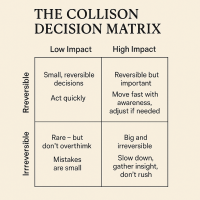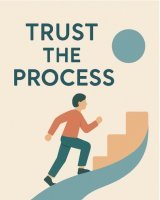Situational Communication
Different Strokes For Different Folks
If you want to go fast, go alone. If you want to go far, go together.

This is the last article in a short series on communication, persuasion and change and we are focusing on situational communication - which is to do with how you adapt your style of communication according to certain key situational factors.
Goal Oriented Communication
People communicate for many different reasons but in this article we are looking specifically at situations where you have a clear objective that you want to influence and persuade the other person:
- To accept and agree with, and
- To take action to support you in the achievement of that objective.
Situational Communication
The Task-Relational Spectrum
Effective communicators change their styles to fit the situation and move appropriately along the spectrum of a task versus a relational orientation.
[1] The task end of the spectrum is directive
It is where you deliver short, focused instructions and tell the other person exactly what you want them to do in as few words as possible.
This can include telling the other person what you want them to do, how you want them to do it, when you want them to do it, where you want them to do it.
A task focused communication is a one-way communication.
It will typically be used in one of two contexts:
- An emergency or a situation of extreme urgency where is an immediate physical, psychological or financial danger.
- Where you are in a role of oversight with the other person and you are mentoring, teaching or instructing them.
[2] The relational end of the spectrum is about affiliation
It is about preserving and deepening a relationship with the other person.
Relationship oriented communication is where the communicator engages in a two-way communication that includes listening, facilitating, and supportive behaviours.
It will typically be used when your intention is to be collaborative, participative and collegiate.
Most of your communications will likely be somewhere in the middle area of this spectrum.
The
key point here is having the flexibility and insight to be able to read
the situation and thus be able to adopt the most appropriate style of
communication on the task-relational spectrum.
This is not about your tone of voice, the type of language you use, the style of your delivery or your body language - important as these are.
Situational communication is about taking account of 3 often ignored factors about the other person:
How to engage with people
As it says in the old African saying in the header to this article:
"If you want to go far, go together."
Bringing people with you is a process not a one-time event.
Here are 3 tips for getting people to care about what you find important:
- Find out what is important to the other person
- Support others in achieving their goals
- Share what you care about.
Situational Communication - Understanding The Legacy

Everyone has a background of prior experiences in many areas of life.
These past experiences will most likely have a significant influence on how someone responds to your attempts to influence and persuade them to accept your suggestions and proposals and to take action to support you in the achievement of your objectives.
As individuals, and organisations, we
all carry scar tissue from past bad experiences and we are energised and
motivated by past good experiences. In the business world we refer to this as "change readiness". If
you understand the other person's past experience, of whatever it is
that you are wanting to persuade them to do, you will tailor your
communication to take account of this.
So make sure you understand the other person's past experiences of this type of holiday before you try to engage their suppport.
Example:
You are pitching the idea to someone you know socially the prospect of their family and yours [plus children and dogs] sharing an Airbnb property that is large enough for 2 families and has enclosed land attached suitable for dogs to run around safely and unsupervised.
Because you are sensitive to the importance of establishing the other person's change readiness, over the course of several conversations you find out that they had a holiday like this 2 years ago with another family and it didn't work out.
Alternatively, you find out that they have done it before and it was a big success.
Clearly you will tailor your approach to address and take acount of these prior experiences.
Situational Communication - Understanding Their Readiness

In addition to understanding someone's past experience and change readiness, it is important to understand their current stage of development and competence. In summary we refer to this as maturity.
Readiness is the preparedness and ability of a person to
take responsibility for directing his or her own behaviour in a specific field of knowledge and activity.
The level of
maturity displayed will depend on the nature of the specific task, function, or
objective for which you are seeking to gain their engagement and support.
The higher the level of maturity the greater will be your emphasis on a relational style of communication.
Conversely, a lower level of maturity will require you to exercise a task oriented style of communiciation.
Example:
Whenever I have been on holiday with my grown up daughter I am very happy to delegate the planning and arrangement to her because I know that she has travelled extensively and taken holidays all over the world.
I was recently trying to encourage a young friend to take a gap year before university and to travel overseas. She liked the idea but was nervous about it, so I adopted a more prescriptive approach and tried to coach her through the process and a range of options she could consider.
If I had reversed my approach to each person the results would have been a disaster!
Situational Communication - How To Give Negative Feedback

In your personal life there will be situations when it is necessary to give some feedback on their behaviour.
This can be hard enough in the workplace where you are responsible for other people and how they perform. But out of the workplace it can be very difficult and can lead to serious friction in relatiomships.
Many years ago I learned simple simple but powerful tips from Ken Blanchard in his seminal book The One Minute Manager
- Give people clear simple goals. Be precise about what you are asking the other person to do, and when you want it done by.
- Give frequent and regular positive feedback. Keep it short and focused. As Blanchard put it: "Catch them doing something right- and praise them".
- If you have to give negative feedback, keep in short and specific. You earn the right to do this
by doing so in a
context of frequent and regular positive feedback.
The absolute key to giving negative feedback
is to do so constructively and without destroying the other person's self esteem. Never lose sight of the fact that you are addressing the behaviour and not the
person.
As the old preachers used to say: "Love the sinner not the sin"!
Example:
When I was a young manager in a large corporation, many years ago, I had a number of staff working for me on business developement.
There was one girl on my team who was quite well intentioned but chaotic and she failed to deliver to me some important documents on time for a business meeting.
Having recently read and been impressed with, the "One Minute Manager" and so decided to put it into practice.
I took her to one side and quickly explained that her behaviour was unacceptable, and I told her why.
She looked extremely upset and became tearful. But as I then proceeded to praise her as a person and a good intentions, her face changed and she broke into a smile.
I will never forget that first experience of practising these tips.
Free Download:
Situational Communication - Summary Notes
Further Reading:
Persuasion
[1] The Art Of Persuasion The One Fundamental Principle - Create A Win-Win
[2] The Art Of Persuasion Advanced Communication Skills - Gaining BuyIn
[3] The Art Of Persuasion Planning For Success - Here's How To Do It!
Change
Getting From A to B Is Not Aways A Straight Line
Group Culture - The Invisible Software That Rules Your Life
Change Questions To Change Your Outcomes
Communication
How To Influence without Authority - 6 Key Tips
Situational Communication - Different Strokes For Different Folks
Return from "Change Questions" to: Communication Persuasion and Change
Or to: Walking The Talk
LATEST ARTICLES
The Battle For Your Mind - How To Win Inner Freedom In A Digital Age Of Distraction
 From External Events to Inner Events. We often think of “events” as things that happen out there: the traffic jam, the rude comment, the delayed email reply. But what truly shapes our experience is wh…
From External Events to Inner Events. We often think of “events” as things that happen out there: the traffic jam, the rude comment, the delayed email reply. But what truly shapes our experience is wh…How to See Your Thoughts Without Becoming the Story
 A Practical Guide to Thought-Awareness. You can spend your life inside the stories of your mind without ever learning how to see your thoughts clearly and objectively. Most of the stuff we tell oursel…
A Practical Guide to Thought-Awareness. You can spend your life inside the stories of your mind without ever learning how to see your thoughts clearly and objectively. Most of the stuff we tell oursel…The Collison Decision Matrix - A Simple Framework for Better Choices
 The Collison Decision Matrix Is A Practical Everyday Thinking Tool. Most of us spend a surprising amount of time worrying about decisions. From small ones such as what to wear, what to eat, what to te…
The Collison Decision Matrix Is A Practical Everyday Thinking Tool. Most of us spend a surprising amount of time worrying about decisions. From small ones such as what to wear, what to eat, what to te…The Power Of Asking The Right Question
 The Power Of Asking The Right Question Lies In The Quest For Insight. To experience the power of asking the right question you must develop the practice of asking questions. The best way to improve th…
The Power Of Asking The Right Question Lies In The Quest For Insight. To experience the power of asking the right question you must develop the practice of asking questions. The best way to improve th…Site Pathways
 Here is a site pathway to help new readers of Zen-Tools navigate the material on this site. Each pathway is based around one of the many key themes covered on this site and contain a 150 word introduc…
Here is a site pathway to help new readers of Zen-Tools navigate the material on this site. Each pathway is based around one of the many key themes covered on this site and contain a 150 word introduc…How To Live With Contradiction - Beyond Thought Let Stillness Speak
 A major impact on so many peoples' lives is the situational contradiction of unfilled realistic expectations. So where does all this leave us? Well here we are, with mental equipment that is more lim…
A major impact on so many peoples' lives is the situational contradiction of unfilled realistic expectations. So where does all this leave us? Well here we are, with mental equipment that is more lim…How To Trust The Process Of Mindfulness - Right Now
 In mindfulness, the process isn’t some distant goal — it's what is happening right now. When we talk about how to trust the process of mindfulness the credibility of the process is heavily dependent…
In mindfulness, the process isn’t some distant goal — it's what is happening right now. When we talk about how to trust the process of mindfulness the credibility of the process is heavily dependent…Inner Mastery For Outer Impact - Mental Clarity For Effective Action
 Insights only matter if they translate into consistent action. In a world crowded with quick fixes and motivational soundbites, the theme “Inner Mastery for Outer Impact” calls us to something more e…
Insights only matter if they translate into consistent action. In a world crowded with quick fixes and motivational soundbites, the theme “Inner Mastery for Outer Impact” calls us to something more e…The Wise Advocate - Helping You Achieve The Very Best Outcome
 The focus of your attention in critical moments of choice either builds or restricts your capacity for achieving the best outcome. When we talk of 'The Wise Advocate' its easy to think of the consigl…
The focus of your attention in critical moments of choice either builds or restricts your capacity for achieving the best outcome. When we talk of 'The Wise Advocate' its easy to think of the consigl…Trust The Process - Beyond The Cliche
 The phrase "trust the process" has become a cliche, the woo-woo mantra of the "self help" industry. Those three little words feel like they ought to mean something useful but hidden behind them are a…
The phrase "trust the process" has become a cliche, the woo-woo mantra of the "self help" industry. Those three little words feel like they ought to mean something useful but hidden behind them are a…The Dopamine Delusion - Why Anticipation Beats Achievement
 The thrill we feel is not in the having, but in the wanting. The more we have, the more we want. The more things we acquire and the easier things get for us, the more discontent we feel. The more spo…
The thrill we feel is not in the having, but in the wanting. The more we have, the more we want. The more things we acquire and the easier things get for us, the more discontent we feel. The more spo…The Power Of Silence Is Experienced In Your Use Of Language
 Practise the "Beneficial Neurological Delay" for optimal comprehension. The power of silence is experienced in your use of language, specifically: - How you formulate the words you use to think and in…
Practise the "Beneficial Neurological Delay" for optimal comprehension. The power of silence is experienced in your use of language, specifically: - How you formulate the words you use to think and in…